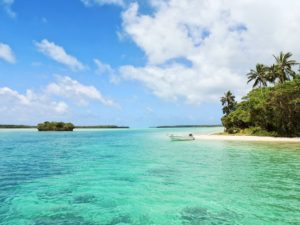You have had it. Living off this deserted island without knowledge if anyone was even coming your way to help is something you just can’t stand anymore. You are probably thinking something along the lines of “If rescue isn’t going to come to me, then I’ll be the one coming to them.”
You do not even know what day or year it is. How much time has passed? 5 days? 50? 500? Time has become meaningless in the face of survival.
But you are done sitting around and twiddling your thumbs while hoping that a random ship passing by notices you. You want to get out, and you want to get out now.
Before you do so, there are a couple of important things that you should probably do and remember, especially if you want to have a chance of surviving the rough and unforgiving ocean.
Building the boat
Even if you are the greatest swimmer in the world, you are not going anywhere anytime soon, especially if your uninhabited island is too far from mainland. What is more likely is that you will tire out after swimming for a few hours, sink, and drown.
Instead, build a boat. It won’t be as grand an ocean liner or as cool as a yacht, but it will do with keeping you afloat and alive.
You will need a lot of wood and vine for lashing, so scavenge as much as you can from the island itself. If your island has it, use bamboo. It is easily the best material you can use, as the hollow stems of bamboo are filled with air, making it considerably buoyant compared to other types of wood.
To create the frame of the raft, lay two large bamboo trees on the sandy part of the beach at least 8 feet apart. You do not want to build it anywhere else, as it will be considerably heavy and potentially impossible to push when fully built. Put it close enough to the water that it can be pushed, without too much effort, but not so close that the water can suddenly claim the vessel before you are even prepared to use it.
Now, find bamboo trees that are at least 8 feet apart (basically how far your bamboo frames are from one another). These will act as your flooring. Make sure you tie smaller branches on top of the larger logs with vines, and to loop the vines over and under each log before tying them.
Once that has been done, you’ve finished your raft! But not so fast, first you need to test if it is seaworthy. Take it out for a test run, but don’t go too far.
Congratulations, you just built your potential ticket out of here!
Watch the wind
Your directions for setting sail are limited, and you are at the mercy of the direction of the waves and the wind. Before setting sail, make sure that the wind and waves are blowing towards the direction you want to go.
Pack as much supplies as you can carry
You are unlikely to be making it back to land anytime soon, so make sure your raft is filled with as much food and water as you can.
You can resort to catching fish by crafting your own rod from salvaged materials and/or materials from the island.
Fresh water, on the other hand, will be a much harder resource to find, as your only hope is for rain to eventually come, so pack as much as you can.
Study the horizon
Before getting on your boat and trying to escape, try to scout the horizon by scaling the highest points of the island. You may be able to find hints or clues as to where land is, if not find out where land itself is!
At night, study the stars if you can, you may be able to figure out the latitude of your location and where the nearest landmass is.
Consider if you really want to escape
This is not meant to discourage you or convince you that you are better off on the island than getting rescued, but rather tell you that your chances of being found on the island are much higher than if you are adrift at sea.
It is important to consider this action very carefully and to weigh your options, because once you set sail, there’s very little chance of turning back.
While you have control over some parts of your terrain when on land (Such as having the ability to build shelters, hunt and send smoke signals for help) you are much less flexible when on your raft out at sea. In fact, it might be even harder to find you in the middle of the ocean when there is no telling where you are when you are surrounded by nothing but waves for miles and miles.
You will also be limited by your supplies. Of course, you can make your food resources last longer by way of fishing, but you won’t be able to eat clams, crabs, and seaweed anymore. They are too far at the bottom of the sea.
All this without even mentioning the fact that humans are land creatures, and the sea is completely off our environment meaning that it is where we are most vulnerable. How do you think you will be able to survive a storm?
Do you really want to risk your raft breaking apart in the middle of the ocean in potentially shark-infested waters all for the chance of getting found by a passing boat or plane?

